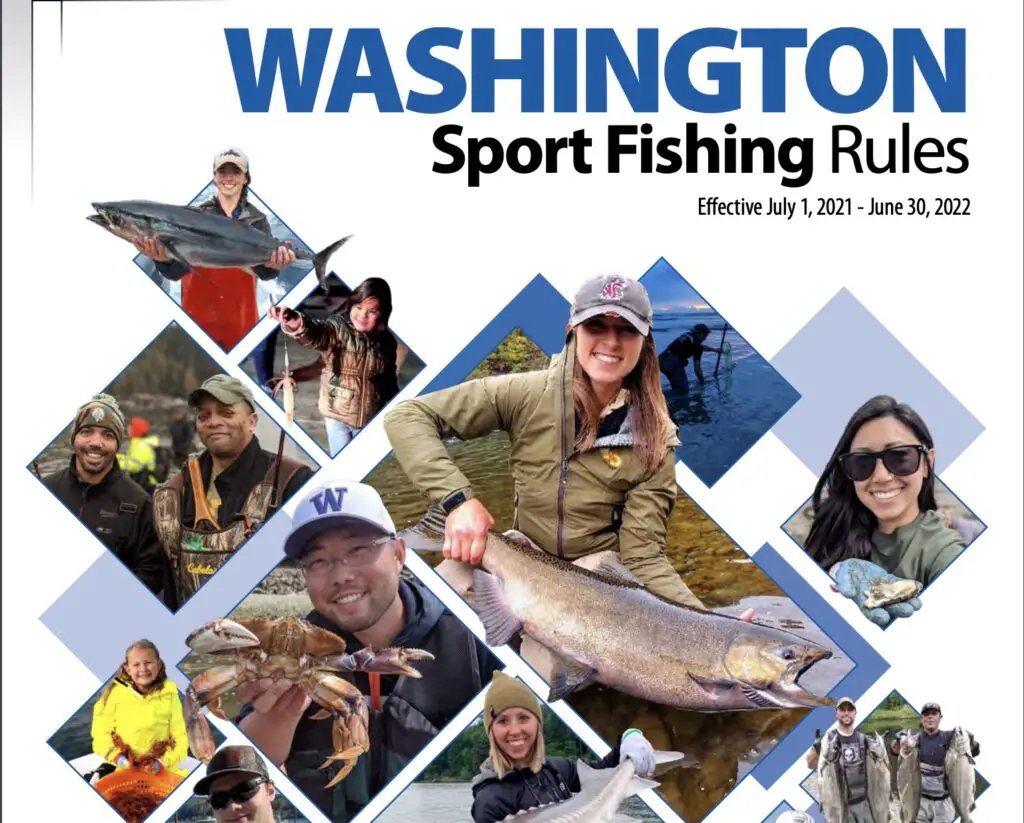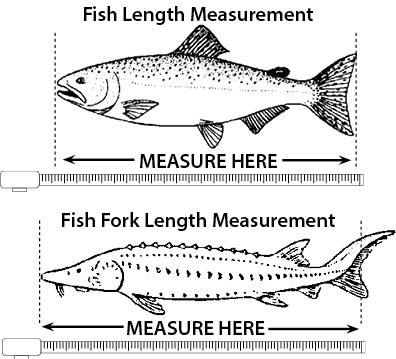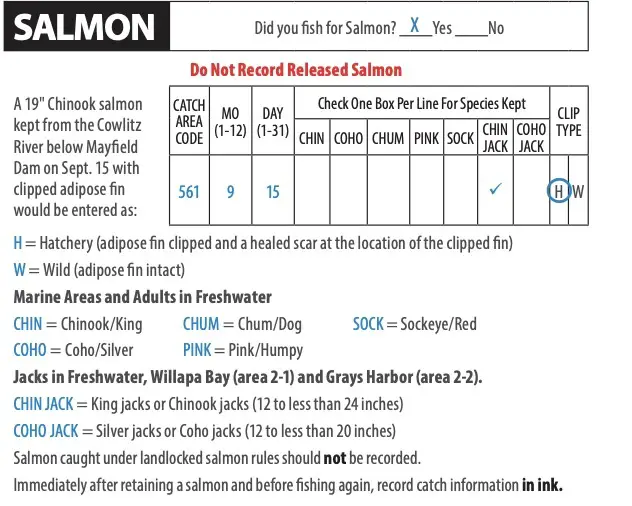
One of the most common complaints I hear from those who are new to fishing for Salmon in Washington State or even some who have fished here for some time is that the regulations published by WDFW are simply too complicated and challenging to figure out how to follow.
I’ve even heard some won’t fish for salmon because they are intimidated by the entire process.
The regulations pamphlet/online PDF is of significant size with many shortened definitions and terms which reference earlier pages that while it’s possible to understand, it’s not really laid out in a way to make it less of a headache.
Think of it this way: What’s published by WDFW is not so much as an angler-friendly guide to help you legally and ethically fish as it’s a legal document, a contract that defines what you may be fined for if you do not follow each rule carefully.
Hopefully this page, and especially as I get helpful feedback over time, will look more like that angler-friendly companion guide to help you legally and ethically fish for saltwater salmon in Washington State (freshwater coming next).
Additionally, there are many assumptions made in the WDFW regulations that you kind of understand certain things about fishing for salmon, that only someone who has done it proficiently would actually be comfortable with.
Which is a catch-22 for someone looking to get started in this amazing hobby/sport.
Here’s what this page is NOT guaranteed to be:
- A replacement for consulting the actual WDFW regulations – My goal is that this would be a helpful companion guide that will help you navigate the official regulations with more confidence.
- Up to date or perfectly consistent with the WDFW regulations (I will try my best, but regulations change and I may not catch every change)
Understanding the Salmon Seasons, Permanent Regulations and Emergency Regulations
There are a few kinds of crazy dynamics here when it comes to salmon fishing in Washington State…and I mean just in terms of the calendar and season setting:
- The process which determines the actual salmon seasons each year is called North of Falcon. This process brings together all the various parties which have input or provide approval to our seasons. The timeline for this process is typically around Feb – Apr.
- We buy new licenses to fish for Salmon on Apr 1st without knowing what the actual seasons will be for the upcoming license year.
- The actual permanent salmon fishing regulations available to the public are for the current or sometimes prior year and most dates in the regulations do not include a year reference.
- The new permanent salmon fishing regulations are not released until late June and permanent regulations are “active” from July 1st to June 30th of the following year, each year.
Are you confused yet?
Let’s walk through an example: If you are looking at a spring salmon fishery say in May…and you look at the permanent rule book, it will give you the regulations for May, even though it “may” be referring to the previous year.
What you needed to do was refer to the emergency regulations, available in a completely different location for most regulations that impact the period from about April – June…
If you just plan to fish from July 1st through the fall, you will probably not be as confused. However, many salmon fishing seasons are closely monitored and based on catch or encounter quotas.
This means that the season could close early by emergency regulation. If you are caught “legally” fishing areas according to the permanent regulations that have already closed through emergency rules, you could still be ticketed.
I’m not going to go on a rant here regarding WDFW, they have an incredibly difficult job, that must be done at a certain level of proficiency for any of us to be able to fish for salmon at all.
My goal is to help YOU understand how to follow the rules, whether they make total sense or not.
I’m assuming you are like me and just want to fish for salmon without getting fined. Where I feel confident in being able to explain “the why” behind a rule, I will offer that as well.
Understanding WDFW’s Saltwater Salmon Fishing Regulations
I’ve attempted to approach this entire topic by trying to put myself in your shoes as someone who just wants to go fishing for salmon in the saltwater.
So I’ve split the section into four distinct phases: 1. Planning 2. Fishing 3. Catching 4. Retaining / Releasing.
Planning a salmon fishing trip in saltwater
Let’s split the planning into several sub-phases: 1. Planning your gear 2. Planning for the specific area to be fished and having a game plan for day 3. Having the correct license for your trip.
Gear rules for salmon fishing in saltwater are much simpler as compared to freshwater
You should start by looking at the general rules for marine areas here.
As you scroll down through the definitions you inevitably hit this line in red:
Salmon – Single-point barbless hooks and a hand-held rod and line must be used.
WDFW Rules
I don’t want to paste much content in this guide as I want you to refer to the actual rules, but I’m pretty sure this one isn’t going to change…
You should scroll down to read the remaining general rules on the above link as there will be a few more that apply to salmon fishing and gear that’s allowed.
You may find additional rules in the actual marine area you are planning to fish, but as of writing this, I’m not aware of any (more on Marine Areas in the next section).
Understanding Marine Area specific rules and how to plan for them
If you are still looking at the general rules for Marine areas link you will notice it starts with a map and explanations.

I’ve included the above map for convenience and because marine area definitions don’t change very often.
The lines on the map correspond with the very specific definitions that follow to help you determine which Marine Area you are in or planning to fish. You must start here before making further plans to fish for salmon as the regulations are written on a per Marine Area basis.
Now that you know your marine area you can click on the appropriate link below:
- Marine Area 1
- Marine Area 2
- Marine Area 3
- Marine Area 4 Marine Area 5
- Marine Area 6
- Marine Area 7
- Marine Area 8
- Marine Area 9
- Marine Area 10
- Marine Area 11
- Marine Area 12
- Marine Area 13
Let’s pick on Marine Area 10 as an example of what to look for. Here’s a sample of the Salmon section of the area-specific rules:
| Entire Area | June 16-July 15 | No min. size. Daily limit 2. Release Chinook and chum. See Harbor Island (Duwamish Waterways) Special Rules, Shilshole Bay Closure, Elliott Bay Closures and Fishery, and Sinclair Inlet Fishery below. |
The first column denotes the particular sub-area within a marine area or will just state: “Entire Area” to denote that what comes after in that row applies to the entire area.
The second column is the season or dates…now this is where it gets tricky.
If it is June 1st when I’m reading June 16-July 15…these dates are likely NOT reliable… I stated in the intro, that the dates from around Apr – June are not accurate until late June or early July when the next year’s regulations are released.
You must depend on emergency regulations to know what the current year’s rules actually are.
Now, let’s pick apart the “Additional Rules” or third column, bit by bit:
No min. size. – Obvious conclusion…you better have a tape measure on board if there’s a minimum size listed, which there often is. The minimum size for chinook will range from 20″ to 24″ depending on the marine area.
I like to use this flexible tape measure while the salmon remains in the net and in the water for easiest measuring access.
How to measure a salmon, like from where to where? You should now consult the statewide general rules / definitions for questions like this. Below is the picture they include illustrating the measurement:

Daily Limit 2 – 2 okay…2 what? In this case, a limit is defined as retention and for that day specifically. There are also possession limits and annual limits defined in the statewide rules and definitions.
Release Chinook and Chum – This implies a few things…that you know how to differentiate between a chinook and a chum in saltwater…all saltwater caught salmon not staging to spawn look incredibly similar even to the trained eye. You better have an identification guide and a few tells memorized.
The most important differentiation you need to be able to make is between chinook and coho, although during pinks years, some big pinks can throw you off and certainly a sockeye being thrown into the mix when you rarely catch them in the saltwater can also mess you up.
For me, the classic chinook tell is black mouth and gum line. They also have a pungent odor that someone who’s been around enough salmon can immediately pick up on.
You should definitely hit the salmon species identification link here and familiarize yourself with several of these.
You don’t need to memorize every tell, but for the area you are fishing and the dates, a few may be more important than others.
Okay, one more thing implied with this regulation is that you can catch salmon NOT identified as chinook and chum…Knowing that this is the typical resident coho season why not just say “You can only retain Coho?”
This is from 2021 when you had some early pink salmon mixed in and who knows, maybe you will hook a returning Lake Washington Sockeye as well…
Again, these are things you should be aware of before you ever get on the water and go fishing in a particular area.
And even if you’ve fished a bunch, it’s a good idea to refresh your knowledge every now and then to make sure you don’t make any obvious mistakes due to forgetfulness.
Last thing in this regulations example to be aware of:
See Harbor Island (Duwamish Waterways) Special Rules, Shilshole Bay Closure, Elliott Bay Closures and Fishery, and Sinclair Inlet Fishery below.
Remember how Marine Areas have all those definitions in them? Well, there are sub-areas within most marine areas that often have closures for specific species or during specific dates.
You need to scroll down past the salmon section and read all the sub-area definitions that might apply as well.
What kind of license do I need to fish for salmon in the saltwater?
You definitely want to have this one worked out before going…Head over to the page on licensing information here.
Many folks I’ve talked to who’ve been buying their license online are ending up with a saltwater license that allows them to fish for salmon, but are NOT getting the catch record card along with their purchase…this is absolutely nuts that the system allows this and it seems unintuitive for people find the correct check box.
I took a new guy out a few months ago and we got him into his first blackmouth / out-migrating chinook salmon…Me and my friend were like “Hey, make sure you punch your card”.
He gave us a blank look that indicated he had no idea what we were talking about. In fact, he had been “legally fishing for salmon” for a year, but never had a catch record card and didn’t realize he needed one, as it was not sent along with the salmon license he bought online.
Crazy right?

And given that it’s a requirement to punch your catch record card after you retain a salmon, it’s pretty darn important that you are fishing with a pen.
That’s right, if you don’t have a pen on you, you cannot go fishing for salmon!
I’ve even heard some WDFW officers will ask to borrow your pen from you (while fishing from the bank that is), and if you don’t have one, they know you’re fishing illegally.
Lastly, you need to consult the emergency regulations for the body of water you plan to fish within 24 hours of your trip.
Things can change that quickly! The specifics on how to find emergency regulations are right at the top of the marine regulations general rules page.
Regulations while fishing for salmon in saltwater
Okay, now that we are on the water fishing for salmon, there are a few more things we need to know in addition to the planning that went into the trip:
You really need to know where you are relative to Marine Area definitions at all times.
It’s very easy to have your original plan changed based on some unforeseen circumstance and now you end up in a completely different marine area…perhaps even one you haven’t researched.
Let’s say you’re fishing for coho in Marine Area 10 near the Oil docks and you get a tip that they are biting near shipwreck point…so you run north…you’ve now crossed over into Marine Area 9.
There are often different regulations for what salmon can be kept in 10 vs 9 such as whether you can retain only hatchery fish with no adipose fin (clipped off at the hatchery with a healed scar) or if it’s a non-selective fishery where all coho salmon can be retained.
Downloading the Fish Washington app can be a helpful way to have the rules at your finger tips, or familiarize yourself with nearby marine areas before you go.
About to tie a new leader on because you haven’t gotten bit yet?
Make sure you check the barb…it happens quite frequently. You tie up a leader at home and say “I will pinch the barb when I tie it on”, always check before you send it down. I use a pair of needle nose pliers that are saltwater-friendly.
Catching a salmon in saltwater
Okay, let’s say you’ve finally had that moment of success. You’ve followed the tips on this blog and you’ve managed to get the salmon to the boat and into your net. Now what? Can we bonk it and put it in the boat? Not so fast!
You need to check 3 things specific to the marine area you caught the salmon in, while the salmon remains outside the gunwales of your boat, and in some areas, it’s illegal to completely remove a salmon you cannot legally retain from the water (if your boat is < 30 ft):
- What species is it? Remember you need to be able to quickly identify the species of salmon
- What about the adipose fin? The are very few marine areas you can keep a salmon with an adipose fin intact. Know before you go!

3. And finally, make sure that if there’s a minimum size requirement, that you can measure the salmon and determine whether it’s legal to retain while it’s in the water.
Retaining or releasing a salmon in saltwater
Lastly, depending on the above, let’s say you’ve decided to retain the salmon based on it being legal to do so.
You should properly take care of your catch via bonking and bleeding, and putting it on ice. And immediately, before going back to fishing, enter it (punch) onto your catch record card.
If you decide to release it, or it’s not legal to retain the salmon, again you cannot pull it out of the water to de-hook it. This means you may need to use a de-hooking device if leaning over the side of your boat is not a possibility for you.
I typically lean over the side and grab the shaft of the hook, near the bend with my fingers and turn it to release the salmon, with just its head out of the water.
Lastly, if you are just getting started and you need to buy a good net…please please please buy a knotless one that gives a salmon the best chance of swimming out and surviving after being caught.